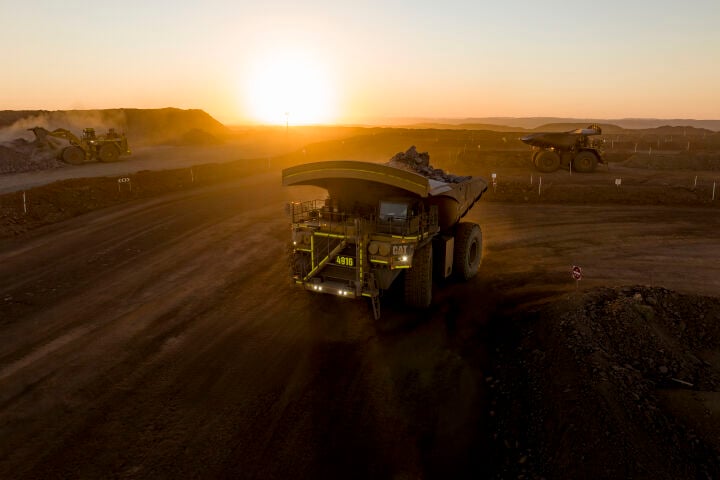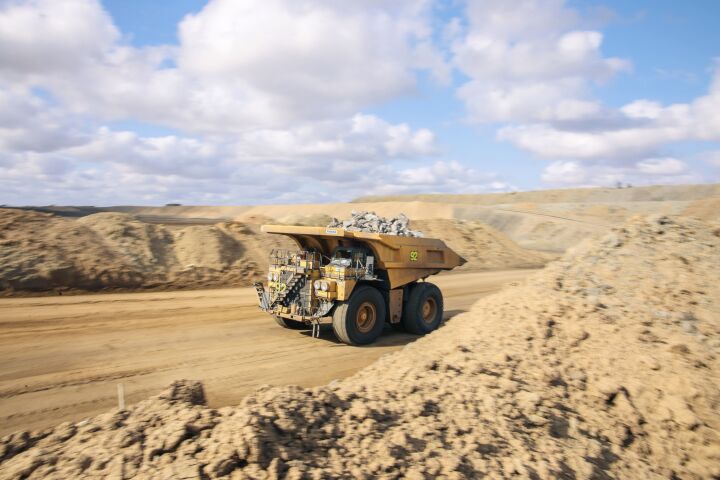How Thiess Uses Readi to Increase Work Hours by 16%

Industry
Mining
Challenge
Mining subcontractor Thiess wanted its operators to work a 7D-7O-7N-7O roster at a client’s hard rock mine in Denver, Colorado. However, this schedule wasn’t in compliance with the client’s hours of work policy.
Results
Thiess used the Readi fatigue management platform to work 16% more hours than the client’s operators, while remaining compliant with their contract.
Key Product
ReadiWatch, ReadiOne, ReadiSupervise, ReadiAnalytics
Readi has allowed us to maintain our contractual obligations to our client in regards to hours of work, while increasing crew health and safety on site with predictive fatigue data.
Michael Ortiz
Health & Safety Advisor

Background
With 90 years of mining history, Thiess is the world's largest mining services provider in the world and specializes in providing a Fly-In Fly-Out (FIFO) Drive-In Drive Out (DIDO) workforce to its clients.
Thiess is a mining subcontractor, currently operating six (6) Liebherr T-264 haul trucks, one (1) CAT-994K loader and one (1) Hitachi EX5600 excavator at a hard rock mine in Denver, Colorado. All trucks have the DSS system installed to alert supervisors and operators of imminent fatigue-related incidents.
Crews are split into 4 Mine Operations crews and 4 Maintenance Crews that alternate days and nights creating a 24-hour operation.
Workers fly in/fly out from across the United States to a centralized point in Denver Colorado, stay in hotels in a nearby town while on shift and shuttle in.
Complying with a Mine Site’s Hours-of-Work Policy
While the client’s hours-of-work policy prohibited operators from working more than 72 hours per week, Thiess’s contractors preferred to work a 7D-7O-7N-7O schedule. Using this schedule, however, would mean working more hours than allowed in the client’s policy.
Thiess’ health & safety team knew that their crew could safely work more hours than this policy allowed. However, while Thiess has always had a strong commitment to safety and fatigue risk mitigation, manual assessments of fatigue fitness weren’t enough for the client to change its policy for the subcontractor.
The client required objective fatigue data.
How Readi Increased Thiess’s Hours Worked by 16% at the Hard Rock Mine
To fulfill this requirement, Thiess implemented Readi in February 2022.
Readi by Fatigue Science is a predictive fatigue risk management solution. This technology does more than just react to an operator’s fatigue signals moments before they fall asleep at the wheel. Rather, the platform provides personalized fatigue scores for every operator, every day, ensuring they are fit for duty.
“Fatigue in the workplace contributes to nearly 65% of heavy equipment related accidents in open pit mines. Historically the number of fatalities reported continues to increase each year with 2023 having the highest at a total of 42 reported fatalities involving miners throughout the United States according to the Mine Safety & Health Administration. The fly-in fly-out (FIFO) & drive-in drive-out (DIDO) is common throughout Australia and other parts of the world but is a new dynamic workplace model to the United States. Factoring in long work hours, rotating shifts, commutes to work and home increases those risks of workplace accidents or fatalities. However, the ability for supervisors and workers to monitor fatigue with live time data and intervene before an incident occurs is critical to ensuring workers safety for everyone and reducing fatality related statistics.
It works like this: Operators’ sleep data is synced to the supervisor’s tablet before every shift, which provides their ReadiScore for the day. This score indicates their individual fatigue levels at the start of shift and for the next 18 hours. It provides an hour-by-hour fatigue score.
As part of their employment contract, supervisors are responsible for reviewing the ReadiScores of their crew every day and taking action if any operator is at risk of being fatigue impaired.
Deploying the Readi fatigue management platform as an alternate method of compliance allowed the variance in work schedules between the client-approved work hours (72 hrs/week) and Thiess’ work hours (84 hrs/week).
For Thiess to remain in compliance, they are measured on two key metrics. These metrics are tracked and reviewed with the client on a weekly basis, based on reports from ReadiAnalytics:
- Hours worked under fatigue (FRP)
- Workers syncing their sleep data.
Readi Improves Mine Site Operations
Thiess’s Health & Safety Advisor, Mike Ortiz, says, “Readi has allowed us to maintain our contractual obligations to our client in regard to hours of work completed, while increasing crew health and safety on site with predictive fatigue data.”
“More than that though, Readi has improved our operations at the Denver mine by creating a proactive fatigue monitoring intervention system and continuing Thiess’s global standard of always taking the highest level of control and speaks to our culture of Everyone Safe Every day.”
He continues, “After implementing Readi, we’ve seen an improvement in operators’ individual fatigue levels and have noted fewer incidents on site while increasing positive self-education of effective and quotative sleeping habits amongst our workforces.
Thiess continues to explore potential ways to maximize fatigue monitoring in the workplace with the Readi watch & ReadiML system being a key focus. The safety of our workers is the key to growth in North America alongside our current and future clients. Our partnership with Fatigue Science in implementing the Readi Watch system creates a strong foundation to fatigue monitoring & intervention and most importantly aligns with Thiess’s global ONE HSE Culture.

